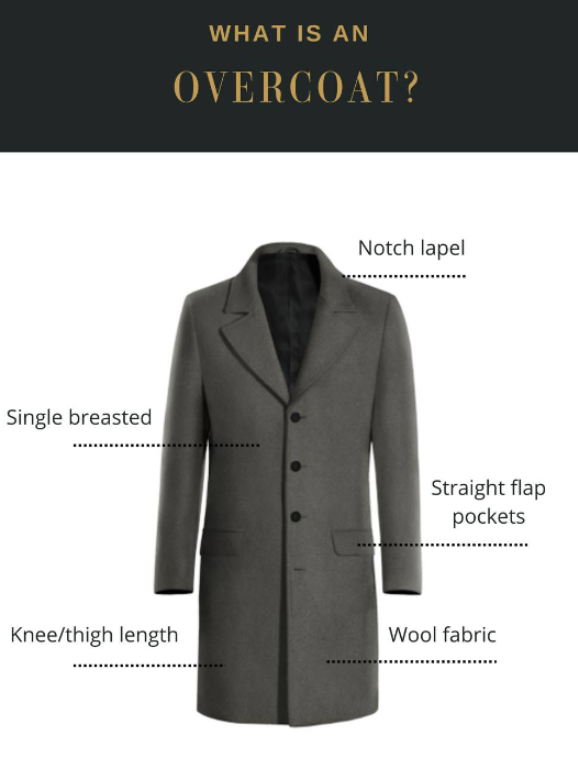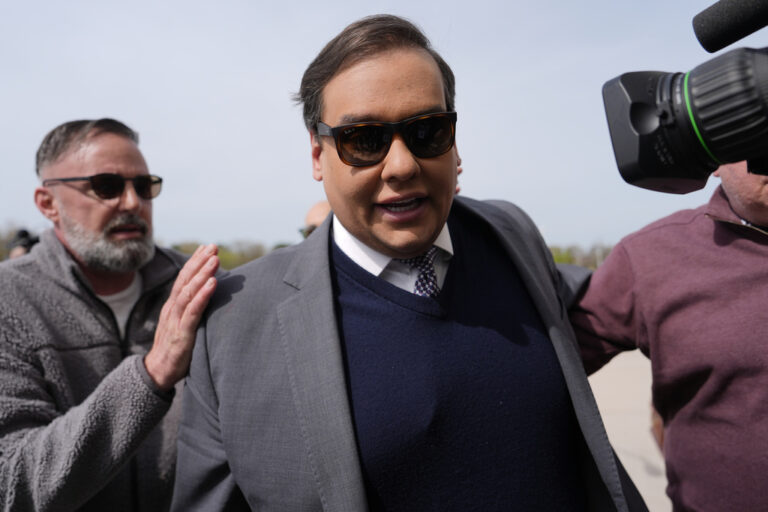The overcoat has been a staple of men’s fashion since the 17th century. Originally designed for warmth and protection against the elements, it quickly evolved into a symbol of masculine elegance. Over the centuries, the overcoat has undergone various transformations, from military-inspired greatcoats to the refined Chesterfields gracing London gentlemen.
Core Principles
The overcoat serves as both an armor against the elements and a sartorial statement of elegance. Its rich history and enduring appeal make it an indispensable piece in any well-dressed men’s collection.
Functionality Meets Style
At its heart, the overcoat— overcoatusa.com —is a pragmatic garment—designed to shield the wearer from wind and weather. Yet it does so with an undeniable air of sophistication. The balance of function and form is what makes the overcoat a quintessential piece.
Powerful Silhouette
Traditionally, overcoats are tailored to create a strong, structured silhouette. Think broad shoulders tapering to a slight waist, emphasizing a V shape that has long been associated with masculine power and presence. This silhouette conveys both authority and refinement.
Timeless Tailoring
Classic overcoats are marked by their clean lines and minimalist design. The focus is on quality fabrics—cashmere, wool, or wool-blends—crafted into elegant, flowing shapes that drape effortlessly over the wearer.
Versatility Across Eras
While cuts and styles have shifted over time, the overcoat remains remarkably versatile. It’s traditionally long enough to cover a suit jacket, making it the perfect companion to formal attire. Yet its adaptability ensures it can easily transition into more casual ensembles.
Guidelines for Wearing—the Basics
-
Fit is Paramount—An overcoat should comfortably layer over your clothes without being too tight or too loose. It should skim your frame rather than drown you in fabric.
-
Length Matters—Classic overcoats generally fall between mid-thigh and knee-length, offering balanced proportions that elongate the body.
-
Versatile Wardrobe Pairing—While traditionally worn over suits for formal or business occasions, the modern overcoat also complements jeans and knitwear beautifully, making it a versatile staple for your wardrobe.
-
Attention to Detail—Look for well-crafted lapels, buttons, and pockets. These subtle details elevate the design and signal quality craftsmanship.
Types of Overcoats
The following foundational styles have given rise to the rich tapestry of overcoats we see today, catering to every taste and occasion.
Chesterfield
This one is the classic of classics. Emerging in the 19th century, it’s named after the Earl of Chesterfield and epitomizes timeless elegance. Typically single-breasted (though sometimes double-breasted), it’s known for its straight cut and understated design. No flamboyant details here—its sophistication comes from its simplicity and structure. It’s the quintessential formal overcoat, perfect over a suit.
Styling Tip
Chesterfield is your go-to for formal occasions. Pair it with a well-tailored suit, a crisp shirt, and a silk tie. Leather shoes—such as oxfords or brogues—complement its sleek silhouette perfectly. Keep accessories minimal to maintain its elegant aura.
Pro Tip: Opt for classic colors like black, navy, or charcoal for versatile styling that will never go out of fashion.
Covert Coat
The covert coat is slightly more casual than the Chesterfield. Originally a hunting and riding coat, it features a hidden button placket (or fly front), which gives it a streamlined look. It’s typically made from durable covert cloth and ends just above the knee. Its understated ruggedness makes it versatile enough for both town and country.
Styling Tip
The covert coat strikes a balance between formal and casual. It pairs excellently with chinos or jeans for a smart-casual look, topped with a turtleneck or a button-down shirt. Chelsea boots or loafers complete the ensemble.
Pro Tip: Consider patterns like subtle herringbone for added texture, and feel free to experiment with earth tones for a more relaxed vibe.
Ulster
Here’s where we lean into more robust territory. The Ulster is double-breasted, often crafted from heavier tweeds, and originally designed for warmth and durability in harsh climates. It’s characterized by its wide lapels, cuffs, and a belt, which can be tied to accentuate the waist or left to hang for a composed drape. This coat conveys an aura of both command and a dash of adventurer’s spirit.
Styling Tip
This one’s all about embracing its rugged nature. Wear it over chunky knitwear or classic plaids, and pair with sturdy boots for a robust, outdoor-ready outfit. The belt can be tied or left open depending on the occasion.
Pro Tip: Play with layering—it’s a coat made for showcasing layers underneath. A scarf or a flat cap can add a touch of character and warmth.
Paletot
This coat is more fitted compared to its peers. With its origins in the 19th century, the Paletot can be single or double-breasted, and often features a more tailored silhouette that follows the body’s curves. It’s sleek and effortlessly stylish, bridging the gap between formal and casual attire with a suave aplomb.
While there are other iterations and evolutions in the overcoat family, these cuts laid the groundwork for the array of contemporary designs available today. Each has its character, suited to different needs and styles, yet all bear the hallmarks of thoughtful tailoring and enduring elegance.
The Paletot does have a bit of an intriguing etymology! The term is French, with origins that might trace back to the Middle English word “paltok,” which referred to a kind of short tunic or jacket. The evolution of the word reflects its journey from practicality to a symbol of style and sophistication. It’s always fun to uncover these linguistic nuggets that add historical charm to our garments.
Styling Tip
The Paletot’s tailored fit makes it a versatile player. Dress it up with slim-cut trousers and a button-up, or keep it casual chic with a fine knit sweater and denim. Minimalist sneakers or smart dress shoes both work well.
Pro Tip: Explore subtle patterns like houndstooth or windowpane to infuse more personality into your look.
Trench Coat
Though not always classified under traditional overcoats, the trench coat warrants mention for its significant impact on menswear. Double-breasted with a belt, it’s typically made from gabardine or leather, featuring epaulets and a storm flap—born out of military necessity, yet now a fashion staple.
Styling Tip
The trench coat is a styling chameleon. Wear it over a suit for a polished look, or with casual tees and jeans for something laid-back. Don’t be afraid to play with the waist belt for a cinched waist.
Pro Tip: A classic khaki trench is a staple, but consider navy or black for a modern twist.
Each style has its own story and flair, so have fun experimenting with these cuts and make each look your own.
Embrace these overcoats not just as a wardrobe necessity, but as your sartorial canvas. And as you snugly wrap yourself in an overcoat, think of it as enveloping yourself in the rich history and tradition of men’s fashion!
Modern Overcoat Etiquette
To keep you looking sharp—not shackled!
1. Length Matters, But Rules are More Fluid
Wearing an overcoat that’s too long or too short for your proportions can throw off your whole look.
-
Savvy Suggestion: Aim for mid-thigh to knee-length as a universal sweet spot. It flatters most body types and works well for both formal and casual settings.
2. Mind the Fit (but not too much!)
Overly tight or baggy fits can make you look either constrained or just unkempt.
-
Savvy Suggestion: The overcoat should comfortably layer over your attire without restricting movement. Think of it as a stylish shield that enhances, rather than constricts, your ensemble.
3. Button Up—or Not
Leaving your coat buttoned when sitting can strain the fabric and the style.
-
Savvy Suggestion: While standing, the middle button (on a three-button overcoat) is traditionally the go-to for a polished look. Feel free to undo when seated or strolling for casual vibes.
4. The Shoe Shuffle
Mismatching footwear with the formality of your overcoat can cause a sartorial stumble.
-
Savvy Suggestion: Formal overcoats pair best with dress shoes, while casual or smart-casual coats (like the covert or trench) play nicely with quality leather sneakers or ankle boots.
5. Accessorize Subtly
Overloading on accessories can clutter the clean lines of an overcoat.
Smart Move: A classic scarf, chic gloves, and perhaps a sleek watch—just a few thoughtful pieces to complement your coat without overshadowing it.
6. Color Coordination—but Break a Rule or Two
Colors that clash can undermine an otherwise great outfit.
-
Safe Waters: Stick to harmonious color palettes, but feel free to occasionally break out with a bold scarf or tie. Sparkle comes from the details, after all!
Ultimately, fashion is as much about self-expression as it is about adhering to rules. So while these guidelines offer a polished foundation, don’t hesitate to throw in your personal touch—a statement piece here, a pop of color there. It’s that unique blend of tradition and innovation that will ensure you wear your overcoat, instead of it wearing you.
Cheers to fashion adventures filled with sophistication and just the right amount of rebellion!











